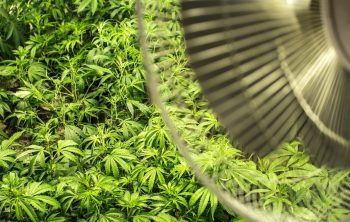Why do I have green spaghetti squash inside, is it supposed to be this color when ripe, and is it safe to eat?
Spaghetti squash is one of the most popularly grown vegetables that most people love to eat. It’s like pasta but it’s not pasta.
Sometimes people notice that the spaghetti squash is green inside instead of its usual yellow or golden color. “Why do I have green spaghetti squash”, this question is typed all over the internet meaning so many people want to find out the answer.
To demystify this question, let us look at all the information about spaghetti squash.
Why Do I Have Green Spaghetti Squash Inside?
When you are at the store buying a spaghetti squash, look for those that have a nice lemon yellow color. If you notice a squash is green inside, it means it isn’t ripe and will have to stay longer before you can use it.
If a spaghetti squash is green and soft, it is more likely to rot than ripen when off the vine. If it has hints of yellow and the squash appears to be full-sized and sounds solid when tapped, it could be mature and ready for eating.

If you are growing spaghetti squash in your garden, look for those that have smooth skin and feel heavier than others. Those are signs of a perfectly ripe spaghetti squash ready to be harvested off the vine.
However, if the fruit is too mature it may already be rotting inside, so it’s hard to tell what stage it is at by just looking at it. Go ahead and try to cut into the fruit by gently prying open the rind just enough to see inside then softly pressing back together. If you notice any green spots or dark discoloration on the seeds, that is an indication that it has begun to rot.
How Do You Know if Spaghetti Squash is Bad Inside?
There are several signs to tell if your spaghetti squash is bad inside. They include:
- Check to See if it is Green Inside. The first rule of thumb is to not eat or cook spaghetti squash if it is green or almost completely green. The easiest way to know if it’s ready for eating is by looking at its color. A fully ripe one should have a bright yellowish-orange tone.
- Check the Rind for Any Discoloration. Any discoloration on the rind means the spaghetti could be rotten on the inside. If the rind appears to be saggy or has a dark spot, do not cook it.
- Check for Any Soft Spots on the Exterior of the Fruit. Any small soft spot can turn into a large dark patch very quickly so if you notice anything with discoloration toss them immediately.
- Are the Seeds Brown? When you are cooking spaghetti squash at home, do not eat those that have already begun to turn brown on the seeds as this may indicate the presence of harmful molds that can cause foodborne illnesses.
Gardeners Basics Squash Seeds for Your Non-GMO Heirloom Vegetable Garden
How to Ripen Spaghetti Squash
If you happen to harvest or buy your spaghetti squash when it is not fully ripe, you can ripen it indoors. Here are several ways you can ripen your spaghetti squash
- Store it in a cool dry place, away from any direct sunlight for about ten to twelve weeks. Simply put, store spaghetti squash as if you store bananas because they both ripen faster when kept at room temperature instead of cold storage area.
- Keep it on top of your counter. Ripen spaghetti squash at home by keeping it on top of your counter or kitchen table to allow the fruit to breathe well and avoid overly moist conditions.
- You can also ripen this winter gourd off the vine but make sure to leave 1/2 inch space between each other so there is enough air circulation around them.
- To know if your spaghetti squash is ripe, check the bottom for any indentations. Mature spaghetti squash will have roots on the bottom while immature ones do not.
Check Out The Top 5 Cherry Tomato Varieties Chart
Spaghetti Squash’s Shelf Life
How long does spaghetti squash stay outside after picking? Spaghetti squash has a short storage life and should be kept indoors at room temperature for no longer than ten days, so it’s best to use them as soon as possible after harvesting or purchasing from the grocery store!
Leaving winter squashes out can cause faster deterioration due to moisture loss and rotting because of a quicker oxidation process happening inside the fruit.
What Color Spaghetti Squash Should I Pick?
The skin of your spaghetti squash should be a yellowish-golden hue. It will start as creamy and then transition to bright. If the squash has an even yellow color, it’s ready for harvest. If you notice green-yellow spots, leave it to grow a little more. But be careful. Once your spaghetti squash reaches an orange hue, you will only be able to preserve it for a short time.
You can use other methods besides color to determine if your spaghetti squash is ready for harvesting. Just relying on the color can leave you unsure. Here are two other ways to determine ripeness:
Check the Skin: Ripe spaghetti squash will have almost flawless skin. There won’t be any bruising or indentations. If these are present, your squash is damaged or overripe.
The Fingernail Method: You can try pushing your fingernail into the squash skin. Mature fruit will be tough and challenging to penetrate. If you can puncture the squash skin, it needs more time to grow.
Spaghetti squash starts as a small fruit with white or green skin. It takes up to 110 days for it to mature. You can use this timeline as another indicator for ripeness if you’re unsure about the color of your squash.
Can You Plant Spaghetti Squash in August?
Spaghetti squash can be grown for a summer or fall harvest. If you’d like a fall harvest, you can plant your spaghetti squash in August.
You should choose a spot that gets full sun for at least 8 hours daily. Starting your seedlings indoors can help you yield healthier plants. They’ll be ready to transplant outdoors in August if you start them in June or July. Dig a hole that’s a little bit larger than the plant root. Carefully place the plant inside and fill it with organic
If you want to sow your seeds directly outside, ensure they’re 1 inch deep. You should leave approximately 12 inches between each seed, so your plants have enough space to grow. Spaghetti squash needs watering directly after you’ve planted them.
You’ll start seeing fruit form about 8 weeks after you’ve sowed your seeds. The squash will be ready to harvest in another 7 or 8 weeks, ensuring that you have fall squash.
When to Harvest Spaghetti Squash?
The best time is just before the first winter frost has made its way. This is usually around early fall time. One of the easiest ways to tell when your spaghetti squash is ready to harvest is to make a note of when your spaghetti squash has bloomed. Then anywhere from 40-50 days after that, your spaghetti squash is likely to be ripe and ready to harvest.
When is Spaghetti Squash Ripe?
As soon as the spaghetti squash turns yellow, either golden or dark yellow; this usually means it’s ripe and ready to pick! This can happen anytime from around 40-50 days after your spaghetti squash has bloomed. Your ripe spaghetti squash should be firm, not soft, or brown.
How to Tell if Spaghetti Squash is Ripe
If you’re wondering what the best way is to tell whether your spaghetti squash is ripe, there are actually a few easy methods to ensure you pick your spaghetti squash at just the right time. Let’s take a closer look.
- Color. If you have green spaghetti squash, it is simply not ready to be picked and it should be left longer. And if you have light orange spaghetti squash, you’ve likely waited too long and it’s now over-ripe. The ideal color for ripened spaghetti squash is golden yellow.
- Clear Skin. If your spaghetti squash shows any markings, bruising, or indentations, it’s likely too late to save your spaghetti squash. It should have clear skin.
- Use Your Finger. Gently press your finger onto the spaghetti squash skin. When you press down, it should be firm and not go straight through. However, if it does, then you should discard the spaghetti squash, as it’s now too ripe.
- Use Your Fingernail. You can also try this with your fingernail. Gently press your fingernail into the spaghetti squash skin. If your fingernail doesn’t go through, it’s a sure sign your spaghetti squash is firm enough to harvest, and enjoy.
Spaghetti Squash When to Pick: The Ideal Time
You may wonder when the ideal harvesting time is for your spaghetti squash. The best time to harvest is either in late summer or early fall, before the first winter frost hits. You’ll know when they’re ready because the squash will have turned a golden yellow or a dark yellowish color.
Nutrition of Spaghetti Squash
Many people choose spaghetti squash over carbohydrates such as pasta. So, you may be curious as to what the nutrition is when it comes to spaghetti squash. Each cup of spaghetti squash contains the following:
- calories: 31
- fat: 0.6g
- saturated fat: 0.1g
- carbohydrates: 7g
- dietary fiber: 1.5g
- sugar: 2.8g
- protein: 0.6g
- cholesterol: 0g
- sodium: 17.2mg
- potassium: 109mg
As you can probably tell from the nutrition, spaghetti squash is much healthier than traditional pasta, so it’s a great substitute if you’re on a low-carb diet, or simply trying to be healthier.

Conclusion: Green Spaghetti Squash
Spaghetti squash, also known as vegetable noodles, has a delicious taste and texture. The flesh of the spaghetti squash has a very mild flavor which makes it a good choice for pairing with almost any sauce or side dish.
Slice your spaghetti squash thin and use it in place of regular pasta; just be sure to cook it first before you serve. If you’re not planning on using your spaghetti squash right away after cooking you can freeze the remaining half and then thaw it out for later use.
To freeze cooked spaghetti squash, just cool the leftovers of your spaghetti squash to room temperature then transfer them to an airtight container and place the container in the freezer.
Why do I have green spaghetti squash? Hopefully, after reading this post you are wiser and can enjoy your spaghetti squash before it goes bad. How about you try new recipes as accompaniments for your spaghetti squash to consume it more often without getting bored?
Do you have any tips or tricks when it comes to green spaghetti squash? If so, please feel free to let us know in the comments below. And remember, sharing is caring!
FAQs
Is it safe to eat green spaghetti squash?
Yes, but do not eat them if they are too mature. Spaghetti squash turns green on the inside when it becomes overripe.
Why is spaghetti squash turning yellow before its time to be harvested?
Spaghetti squash starts turning yellowish orange or dark greenish color once reaching optimal maturation stage of harvest.
How do you know if spaghetti squash is bad inside?
There are several signs to tell if your spaghetti squash is bad inside, they include rind discoloration, green flesh, or soft spots on the exterior of the fruit.

Brian is an avid gardener who loves spending time outdoors. He is passionate about using his green thumb to create beautiful, lush gardens for her friends and family. He finds joy in tending to her garden, trimming plants, and cultivating new species. He enjoys to share his knowledge and experience with others with a similar gardening enthusiasm. Brian is a true nature enthusiast and a has true passion for the outdoors.





